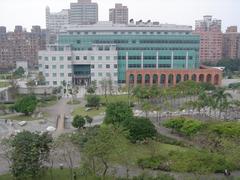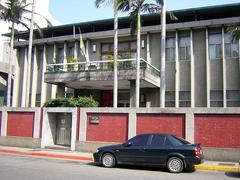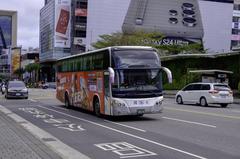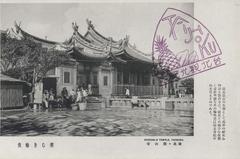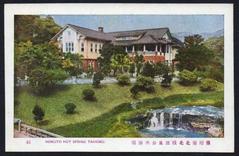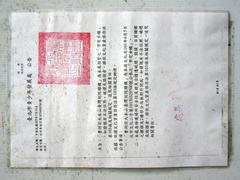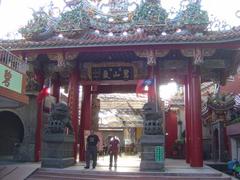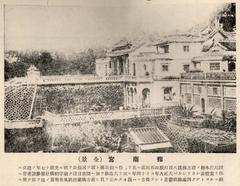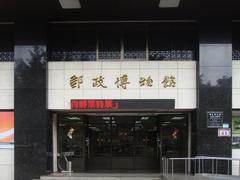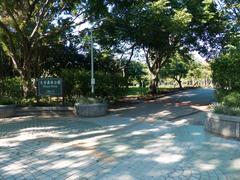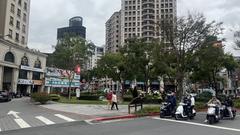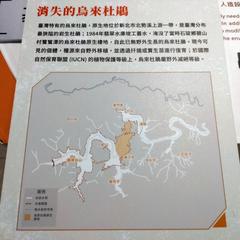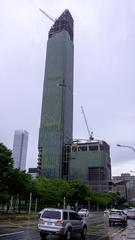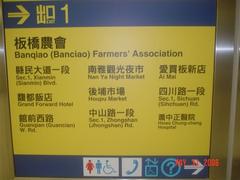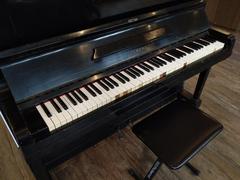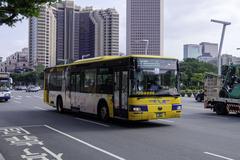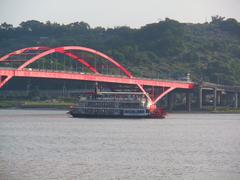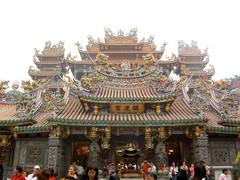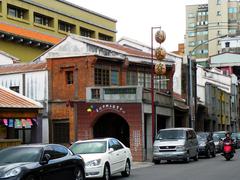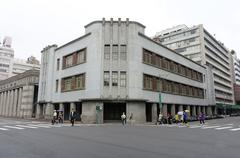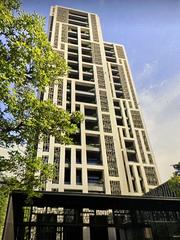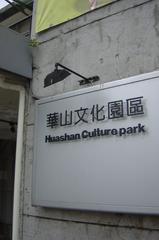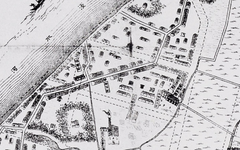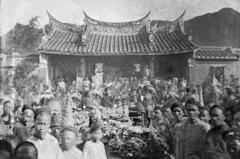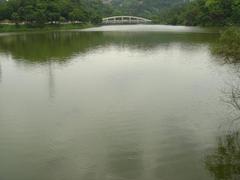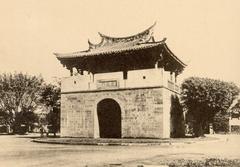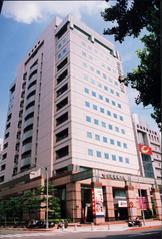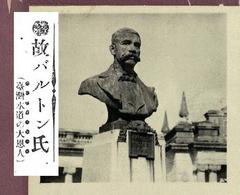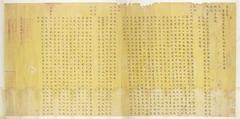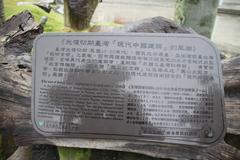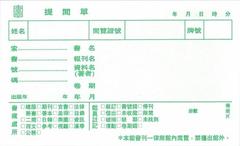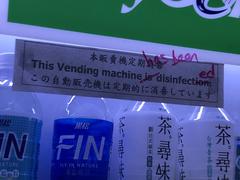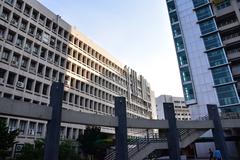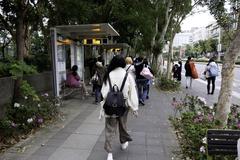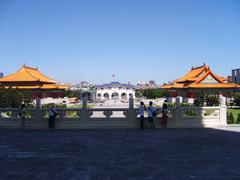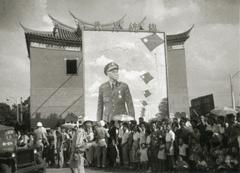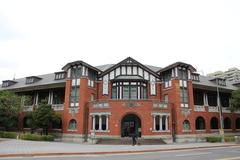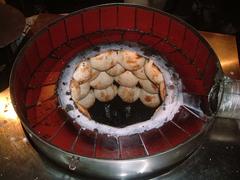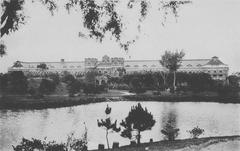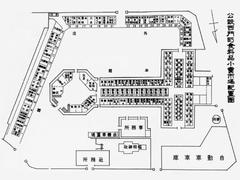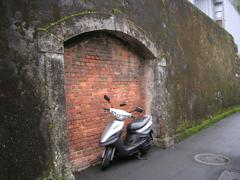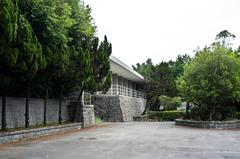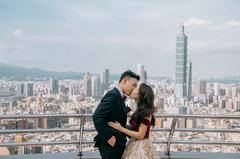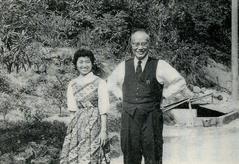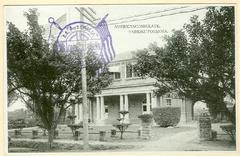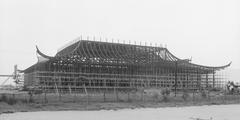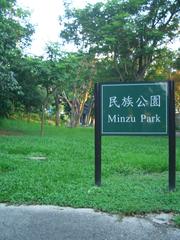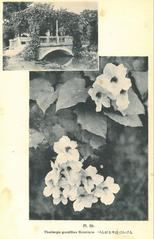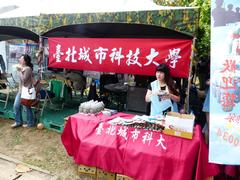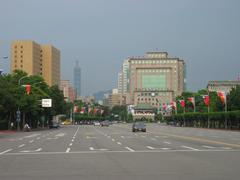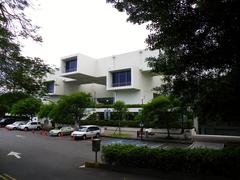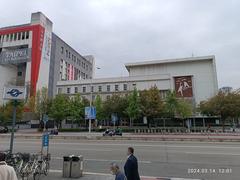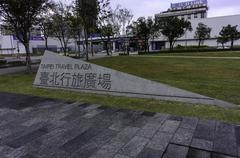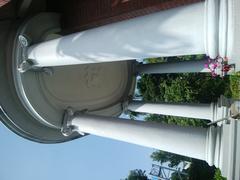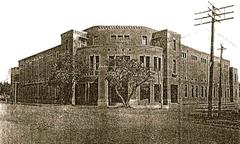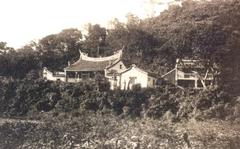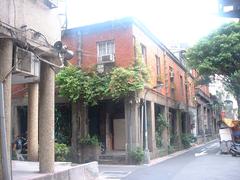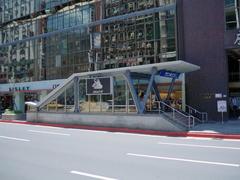Comprehensive Guide to Visiting Taipei, Taiwan: History, Significance, Visitor Tips, and Everything Tourists Need to Know for a Memorable Experience
Date: 01/08/2024
Introduction
Taipei, the dynamic capital of Taiwan, offers a rich tapestry of history and culture, making it an indispensable destination for travelers. From its early days as a settlement by Han Chinese in the Taipei Basin in 1709 (Wikipedia), through its transformation under Japanese colonial rule, and its pivotal role as the capital of the Republic of China (ROC), Taipei’s historical journey is both complex and fascinating (Britannica). This guide aims to provide comprehensive insights into Taipei’s key historical sites, their visiting hours, ticket information, and valuable travel tips to ensure an enriching experience for every visitor.
The city’s evolution has been influenced significantly by various periods of rule and development. During the Qing Dynasty, Taipei emerged as a significant administrative center, a status further solidified under Japanese colonization, which brought about rapid modernization and infrastructural advancements (Wikipedia). After World War II, Taipei was placed under ROC governance, leading to its current status as a major political, economic, and cultural hub (Wikipedia).
Table of Contents
- Introduction
- Exploring Taipei’s Rich History: Key Historical Sites, Visiting Hours, and Travel Tips
- Essential Visitor Tips for Exploring Taipei: Weather, Transportation, and More
- Conclusion
- References
Exploring Taipei’s Rich History: Key Historical Sites, Visiting Hours, and Travel Tips
Historical Background
Early Settlement and Formation
The recorded history of Taipei began with the Han Chinese settling in the Taipei Basin in 1709. The region was initially home to the Ketagalan tribes before the 18th century (Wikipedia). Chinese immigrants from Fujian province on the mainland founded Taipei in the early 18th century (Britannica). By the late 19th century, the area of present-day Taipei was home to northern Taiwan’s major Han settlements, in addition to the government-designated foreign trade port of Tamsui (Wikipedia).
Development Under Chinese Rule
In 1875, Taipei was made an administrative entity of the Chinese government, and when Taiwan was proclaimed a province of China in 1886, the city was made the provincial capital (Britannica). The work to create an independent Fokien-Taiwan Province started in 1885 and was officially declared in 1887. The temporary capital of the new province was placed at Taipehfu, leading to significant urban development, including the construction of a substantial wall around the city, paved streets, and the introduction of electric lighting (Wikipedia).
Japanese Colonial Era
As a result of the first Sino-Japanese War, China ceded Taiwan to Japan in 1895. During the Japanese era, Taipei, called Taihoku in Japanese, emerged as the political center of the Japanese Colonial Government (Wikipedia). The city underwent rapid modernization, acquiring many characteristics of an administrative center, including new public buildings and housing for civil servants (Britannica). By 1901, Taihoku Chō was one of twenty districts established, and with a population of over 294,000, it was the most populous district in the 1904 census (Wikipedia). In 1920, Taihoku was incorporated as part of Taihoku Prefecture, and in 1938, the eastern village Matsuyama (now Songshan and Xinyi District) was annexed into Taihoku City (Wikipedia).
Post-World War II and Nationalist Rule
Following Japan’s defeat in World War II, Taiwan was placed under the governance of the Republic of China (ROC) on October 25, 1945 (Wikipedia). Taipei was at the center of a massacre of local Taiwanese by mainlanders in early 1947, known as the February 28 Incident. The 2-28 Peace Memorial Park commemorates this tragic event (Britannica). In 1949, after the Chinese Civil War, the ROC government retreated to Taiwan and declared Taipei the temporary capital of the ROC (Wikipedia).
Modern Era and Economic Growth
In the 1950s, the USA provided financial assistance to the ROC government, which spurred rapid structural and industrial growth in Taipei (Wikipedia). The city continued to develop as a high-tech industry hub and the national capital of Taiwan. Taipei’s economic importance grew with increases in foreign trade, especially related to tea exportation (Wikipedia).
Key Historical Sites and Memorials
2-28 Peace Memorial Park
The 2-28 Peace Memorial Park is a significant historical site in Taipei, commemorating the February 28 Incident of 1947. This park serves as a reminder of the massacre of local Taiwanese by mainlanders and is a place for reflection and remembrance. The park is open daily from 5:00 AM to 10:00 PM, and entry is free (Britannica).
Presidential Building
Much of Taipei’s architecture dates from the Japanese era, including the Presidential Building, which was originally the Office of the Governor-General of Taiwan. This building is a prominent example of Japanese colonial architecture and serves as the office of the President of Taiwan. Guided tours are available Monday to Friday from 9:00 AM to 12:00 PM, and admission is free (Wikipedia).
Chiang Kai-shek Memorial Hall
The Chiang Kai-shek Memorial Hall, officially known as Liberty Square, is a national monument built in 1976 in honor of Chiang Kai-shek, the former president of the Republic of China. The memorial also houses a library and a museum documenting Chiang Kai-shek’s life and career. It is open daily from 9:00 AM to 6:00 PM, and entry is free (Nomadic Matt).
Cultural and Historical Museums
National Palace Museum
The National Palace Museum in Taipei houses a collection of over 70,000 artifacts from Imperial China. Most of the collection was brought to Taiwan during the Chinese Civil War. The museum offers free daily tours in English and has a section for children. It is open daily from 8:30 AM to 6:30 PM, with an entry fee of NT$350 for adults (Nomadic Matt).
Nearby Attractions and Travel Tips
While exploring Taipei’s historical sites, you may also want to visit nearby attractions such as the Taipei 101 skyscraper, the bustling night markets, and the serene Beitou Hot Springs. For a seamless experience, consider purchasing an EasyCard for convenient access to public transportation. Many of the historical sites offer guided tours, which can provide deeper insights into Taipei’s rich history.
Essential Visitor Tips for Exploring Taipei: Weather, Transportation, and More
Weather and Seasonal Considerations
Taipei experiences a subtropical climate, with August being one of the hottest and most humid months. Temperatures can soar above 30°C (86°F), and the humidity can make it feel even hotter. Additionally, August is a peak month for typhoons, which can bring heavy rains and strong winds. Tourists should be prepared for sudden weather changes and have a plan in place for indoor activities during typhoons. For more information on what to do during a typhoon, check out Taiwan Obsessed.
Clothing and Packing Essentials
Given the hot and humid weather, lightweight, breathable clothing is essential. Cotton and linen fabrics are recommended. Don’t forget to pack a hat, sunglasses, and sunscreen to protect yourself from the sun. An umbrella or a raincoat is also advisable due to the frequent rain showers. Comfortable walking shoes are a must, especially if you plan to explore the city’s many attractions on foot.
Transportation
Taipei boasts an efficient and extensive public transportation system. The Mass Rapid Transit (MRT) system is the most convenient way to get around the city. It is clean, safe, and covers most tourist attractions. For those planning to travel outside Taipei, the Taiwan High-Speed Rail (THSR) offers a fast and comfortable option. Non-residents can avail of a 20% discount on THSR tickets through promotions like those offered by Klook.
Accommodation
Taipei offers a wide range of accommodation options to suit all budgets. For a luxurious stay, consider hotels in the Xinyi District, close to Taipei 101. For budget travelers, hostels in the Ximending area are a good choice. Families might prefer the Beitou area, known for its hot springs. For detailed recommendations on where to stay, visit Nick Kembel’s guide.
Food and Dining
Taipei is a food lover’s paradise, famous for its night markets and street food. Shilin Night Market is a must-visit for its variety of local delicacies. For a more upscale dining experience, Yongkang Street offers numerous restaurants and cafes. Don’t miss trying the famous mango shaved ice at Ice Monster or Yongkang Street. For more food recommendations, check out Taipei Travel Geek.
Cultural Etiquette
Taiwanese people are known for their hospitality and politeness. When visiting temples, dress modestly and remove your shoes before entering. It’s also customary to bow slightly when greeting someone. During Ghost Month, which usually falls in August, locals observe various customs and taboos. While tourists are not required to follow these, being aware of them can enhance your cultural experience. For more on Ghost Month, visit Taiwan Obsessed.
Safety Tips
Taipei is generally a very safe city, but it’s always wise to take standard precautions. Keep an eye on your belongings in crowded places like night markets and public transport. In case of a typhoon, stay indoors and follow local news for updates. For those planning to hike, be aware that trails can become slippery and dangerous during the rainy season. For more safety tips, visit Busy Tourist.
Language and Communication
While Mandarin is the official language, many young people and those in the service industry speak some English. Learning a few basic Mandarin phrases can be helpful and is often appreciated by locals. Free Wi-Fi is available in many public places, and purchasing a local SIM card for data needs is recommended. To avoid long queues at the airport, consider pre-ordering your SIM card online. For more details, check out I Wander.
Money and Budgeting
The local currency is the New Taiwan Dollar (NTD). Credit cards are widely accepted in hotels, restaurants, and larger stores, but it’s advisable to carry some cash for small purchases and street food. ATMs are plentiful, and many accept international cards. Budget travelers can enjoy Taipei on a modest budget, thanks to affordable street food and public transport. For more budgeting tips, visit Treksplorer.
Health and Wellness
Tap water in Taipei is not recommended for drinking, so always opt for bottled water. Pharmacies are readily available, and many staff members speak English. In case of medical emergencies, Taipei has several international hospitals. It’s also a good idea to have travel insurance that covers medical expenses. For more health tips, visit Out of Town Blog.
Special Events and Festivals
August is a vibrant month in Taipei, with several events and festivals. The Taipei Summer Festival features weekly fireworks at Dadaocheng Riverside, culminating in a grand display on August 10th for Qixi, the Chinese Valentine’s Day. August 8th is Father’s Day in Taiwan, so expect restaurants to be busy. For more on events and festivals, visit Taiwan Obsessed.
Shopping
Taipei is a shopper’s paradise, offering everything from high-end malls to bustling night markets. Ximending is the go-to place for trendy fashion and quirky souvenirs. For electronics, Guanghua Digital Plaza is the best spot. Traditional markets like Dihua Street offer a glimpse into Taipei’s past and are great for buying local handicrafts. For more shopping tips, visit Belletrist Travels.
Nightlife
Taipei’s nightlife is diverse, ranging from night markets to upscale bars. Ximending and the area around Taipei 101 are popular nightlife spots. For a unique experience, visit Indulge Experimental Bistro, which is known for its creative cocktails. For a more casual night out, Beer Rush Taproom offers a wide selection of local and international beers. For more nightlife recommendations, visit Belletrist Travels.
Conclusion
Taipei stands as a testament to Taiwan’s rich historical and cultural heritage, offering a unique blend of traditional and modern experiences. From its early development as a Han Chinese settlement to becoming a bustling metropolis under Japanese rule and later the capital of the ROC, Taipei’s historical journey is reflected in its diverse architectural landmarks and cultural sites (Britannica). Exploring the city’s key historical sites, such as the 2-28 Peace Memorial Park, the Presidential Building, and the Chiang Kai-shek Memorial Hall, provides a deep understanding of its past and its significance in shaping Taiwan’s present (Nomadic Matt).
Visitors to Taipei can enjoy a range of activities, from delving into the extensive collections at the National Palace Museum to experiencing the vibrant street food culture at night markets. The city’s efficient public transportation system, diverse accommodation options, and rich culinary scene add to the convenience and enjoyment of the trip (The Whole World Is A Playground). Whether you’re a history enthusiast, a foodie, or simply looking to explore a new city, Taipei promises a memorable and enriching experience. For the latest travel updates and tips, download our mobile app Audiala and follow us on social media.
References
- History of Taipei (Wikipedia). (n.d.). Retrieved from https://en.wikipedia.org/wiki/History_of_Taipei
- Taipei (Britannica). (n.d.). Retrieved from https://www.britannica.com/place/Taipei
- History of Taiwan (1945–present) (Wikipedia). (n.d.). Retrieved from https://en.wikipedia.org/wiki/History_of_Taiwan_(1945–present)
- Taiwan Travel Guide (Nomadic Matt). (n.d.). Retrieved from https://www.nomadicmatt.com/travel-guides/taiwan-travel-guide/
- Taiwan Itinerary Travel Guide (The Whole World Is A Playground). (n.d.). Retrieved from https://www.thewholeworldisaplayground.com/taiwan-itinerary-travel-guide/
- Taiwan in August (Taiwan Obsessed). (n.d.). Retrieved from https://www.taiwanobsessed.com/taiwan-in-august/
- Best Itinerary Taipei (I Wander). (n.d.). Retrieved from https://iwandered.net/best-itinerary-taipei/
- Taiwan Travel Guide (Nick Kembel). (n.d.). Retrieved from https://www.nickkembel.com/taiwan-travel-guide/
- Taipei Guide (Taipei Travel Geek). (n.d.). Retrieved from https://www.taipeitravelgeek.com/taipei-guide
- Things to Do in Taipei (Busy Tourist). (n.d.). Retrieved from https://www.busytourist.com/things-to-do-in-taipei/
- Things to Do in Taipei, Taiwan (Treksplorer). (n.d.). Retrieved from https://www.treksplorer.com/things-to-do-in-taipei-taiwan/
- Taipei Travel Guide (Out of Town Blog). (n.d.). Retrieved from [https://outoftownblog.com/taipei-travel-guide/](https://outoftownblog
